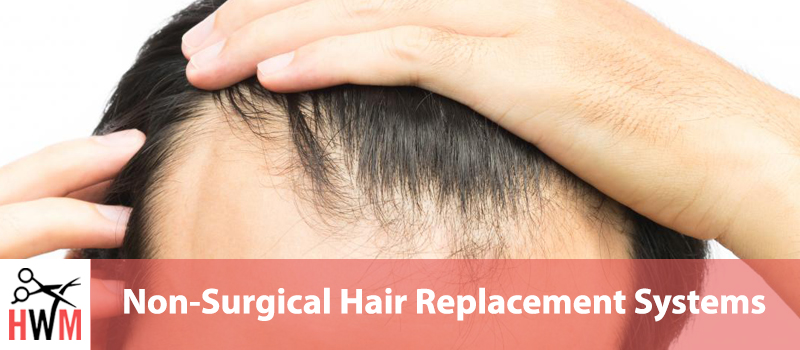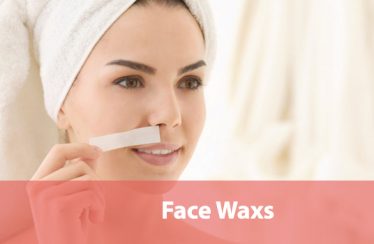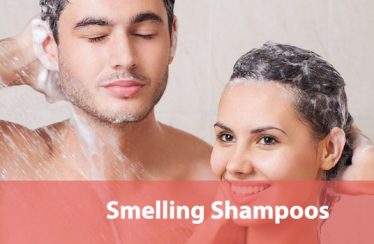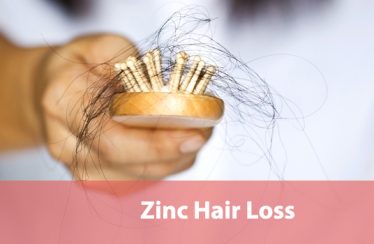There’s nothing more devastating for a man’s self-regard than the realization that he is losing hair. The way hair loss is viewed is justified too. After all, it’s impossible to ignore that bald or balding men are treated differently than men with a full head of hair.
While men are more prone likely to suffer from hair loss, even women can end up facing this problem. In the majority of cases, hair loss is a result of pattern baldness, which is a genetic problem.
Unfortunately, like all genetic problems, the effects of pattern baldness are very difficult to combat.While not entirely impossible, it is just incredibly tedious, time-consuming, and difficult to stop or slow down hair loss caused by excess DHT.
Moreover, since most people lead very busy lives and don’t have time for elaborate lifestyle or dietary changes, they want a quick-fix to the problem. Enter non-surgical hair replacement systems.
Non-surgical hair replacement systems are quick, cheap, and deliver excellent results. However, most people don’t know what they are. As a result, there are a lot of misconceptions and inflated or reduced expectations out there when it comes to non-surgical hair replacement.
This is why we’ll be demystifying non-surgical hair replacement systems, on this page. We’ll tell you everything that you’ll ever need to know about this excellent counter to hair loss, beginning from what it is and how it is unique to how much you’ll have to pay to get it.
Here’s a quick, clickable roundup of everything you’ll find on this page.
- What Is Non-Surgical Hair Replacement?
- What Are the Advantages of Non-Surgical Hair Replacement?
- What Are the Disadvantages of Non-Surgical Hair Replacement?
- How Is Non-Surgical Hair Replacement Different from Hair Transplant?
- How Much Does Non-Surgical Hair Replacement Cost?
- What Are the Characteristics of a Good Non-Surgical Hair Replacement System?
- What Is the Non-Surgical Hair Replacement Maintenance Like?
- Showering with The Non-Surgical Hair Replacement System
- Removing and Cleaning the Non-Surgical Hair Replacement System
- Cleaning the Scalp After Removing the Non-Surgical Hair Replacement System
- Conditioning the Non-Surgical Hair Replacement System
- Sleeping with The Non-Surgical Hair Replacement System
- Brushing the Non-Surgical Hair Replacement System
- Maintaining A Curly Non-Surgical Hair Replacement System
- Which Shampoos Are Good for Non-Surgical Hair Replacement System?
- Which Conditioners Are Good for Non-Surgical Hair Replacement System?
- Are There Other Non-Surgical Hair Replacement Options?
What Is Non-Surgical Hair Replacement?
Non-surgical hair replacement is a technique that can be used to cover bald patches caused by androgenetic alopecia (male pattern baldness), nutritional deficiencies, or medical conditions.
The application of this technique results in the creation of a “hair system” that can cover the bald patch completely and blend in with the surrounding hair seamlessly. The hair system comprises a thin membrane with hair fixed on it.
The materials used to make the hair system vary on the basis of various things. These include the nature of the bald patch, the hair type, and especially the cost.The membrane of a hair system is typically made up of polyurethane, a kind of monofilament or even a unique lace-like material. The hair on the membrane can either be synthetic or real human.
The hair system can be both permanent or temporary, depending upon your preference. However, whether it is permanent or temporary will determine how it is attached to your scalp.
Typically, hair systems are stuck onto the scalp with biologically-safe adhesives. When this method of attachment is used, the bald patch is usually shaved clean first. If balding isn’t significant enough, your non-surgical hair replacement expert may choose to fix the hair system to existing hair.
This method is slightly more complicated, but it doesn’t require you to shave your hair off. There are various ways through which the hairpiece will be attached to existing hair, including bonding, beading, cabling, fusion, and even weaving.
What Are the Advantages of Non-Surgical Hair Replacement?
 If you’re considering non-surgical hair replacement, then you’ve probably already realized a few of the benefits of this great technique of countering hair loss.
If you’re considering non-surgical hair replacement, then you’ve probably already realized a few of the benefits of this great technique of countering hair loss.
In fact, most benefits of non-surgical hair replacement are fairly evident. However, there are several benefits that don’t become obvious immediately. If you’re deciding whether to go for non-surgical hair replacement or not, then you need to know these benefits to make an informed decision.
The following are the main ones.
Noninvasive Procedure
The biggest benefit of non-surgical hair replacement is that it is a noninvasive procedure. Unlike hair transplant, this method of dealing with hair loss won’t require you to submit to the needle or the knife.
People who have lower pain thresholds will find this a very alluring quality. However, even if you’re not a stranger to pain and surgeries, you still need to consider this benefit carefully. You see, one thing that is common with all invasive procedures is the risk of infection.
Even a minor oversight on the part of the professional operating on you can result in a big, life-changing problem for you. As a result, it is always better to avoid invasive procedures, making non-surgical hair replacement a great option.
Confirmed Success
There is a measure of uncertainty with all techniques of dealing with hair loss. Whether you’re considering natural solutions, laser therapy, or hair transplant, there is always the possibility that you won’t see the results you expected at the beginning.
None of those techniques can offer you a 100 percent guarantee of success. In contrast, when you go in for non-surgical hair replacement, you can always rely on it to work.
Moreover, you can be sure of the magnitude of the success too. When you step up to sit on that chair, you can be sure that when you stand up, you’ll have a full head of hair in the style that you’ve always wanted.
Reversible Procedure
Non-surgical hair replacement doesn’t only offer a 100 percent guarantee of a positive outcome, but also the option of reversal.
Suppose you choose a specific style for your hairpiece but don’t like how it looks on your head once the procedure is complete. The nature of the non-surgical hair replacement technique is such that you’ll have the option to ask your technician for changes, modifications, or even a complete overhaul of the look.
No other technique of dealing with hair loss will offer you this option. In fact, all other techniques will only be able to offer you the chance of getting your old look back. In fact, even when those techniques will be successful, the look you’ll get will be a lesser version of what you used to have.
Instant Results
All other methods of dealing with hair loss will require you to wait a considerable amount of time for results. Natural solutions such as dietary and lifestyle changes will require you to wait for a minimum of six months if not a year or more.
With a hair transplant, you’ll have to worry about the right donor before worrying about whether your body will accept the grafts properly or not. As a result, hair transplants can take a whole year to be complete.
The results of non-surgical hair replacement are always immediate. The moment the procedure is finished, you’ll have a new look to be proud of.
Suitable for Everyone
There is, indeed, a lot of uncertainty surrounding hair loss and even more confusion about the various ways of countering it. The reason for this is that the available techniques are not exactly reliable.
A technique may do wonders for one person but be a complete dud for another. As a result, you’ll see as many people singing praises about an anti-hair loss technique as those who are criticizing it.
In fact, some techniques even require specific conditions to be met before being relevant. For instance, if you’re suffering from male pattern baldness, then you need to have progressed deep into the pattern for hair transplant to be relevant to you. In other words, the technique requires you to suffer through the ignominy of baldness first.
Non-surgical hair replacement, however, is different. Whether your hairline has just started receding or you’re well into the deeper stages on the Norwood Scale, you will qualify for the procedure without hitches.
Low Cost
The biggest benefit of non-surgical hair replacement is its cost. It is one of the most affordable ways of dealing with hair loss. In fact, barring dietary and lifestyle-based changes, there is no anti-hair loss technique known to man that is cheaper than non-surgical hair replacement.
The cost of hair transplants can range between $4,000 and $15,000. These aren’t one-time costs either, regardless of what people tell you. You’ll have to go for touchups every few months.
If you contrast these costs with the fact that a non-surgical hair replacement piece only costs about $1,000 and only needs to be changed every three to four months, you’ll find it to be significantly more affordable than other methods of dealing with hair loss.
What Are the Disadvantages of Non-Surgical Hair Replacement?
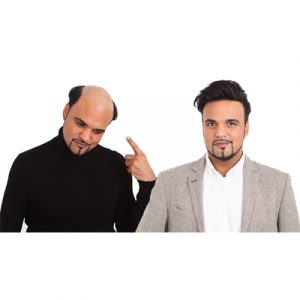 Like everything else in the world, non-surgical hair replacement isn’t without its flaws. Most of these flaws, however, have a dual nature. A person with the right mindset may see them not as flaws but advantages.
Like everything else in the world, non-surgical hair replacement isn’t without its flaws. Most of these flaws, however, have a dual nature. A person with the right mindset may see them not as flaws but advantages.
The flaws basically boil down to one thing – effort. Non-surgical hair replacement systems require the user to put in a lot of effort. If you don’t scowl at putting in an effort to reap your rewards, then you won’t find these flaws to be significant. Consider.
Maintenance is Tedious and Time-Consuming
One area where non-surgical hair replacement falls short of all other anti-hair loss techniques is maintenance.
Virtually every other method of countering hair loss revolves around re-growing your hair. This means that if those methods work for you, then your hair won’t require any special attention. While you’ll still have to take care of your newly re-grown hair more tenderly, the effort will still not be as taxing as what hair systems require.
Maintaining a non-surgical hair replacement piece is time-consuming and tedious. This is mainly because of the way the hair piece’s membrane sticks to your scalp. The contact is very tight, which brings in problems like the smell of accumulated sweat and skin oil in the area.
This is particularly a problem if the hairpiece isn’t cleaned regularly or is worn for too long a period. Cleaning the hairpiece is very difficult too. There are two elaborate ways. One is showering with the hairpiece attached and the other is to detach it and clean it.
You may think that these seem simple, but they aren’t as you’ll see when we explain both methods of cleaning your non-surgical hair replacement piece in a later section in this guide.
Another maintenance aspect of your hair system will be its association with your natural hair. You’ll have to ensure that the hairpiece matches your natural hair. This means two things.
The first is that you cannot let your natural hair grow too long or the hairpiece will become easy to spot. The other is that the color of your natural hair will always have to match the color of the hair on your hairpiece. Any significant graying or discoloration (if you color your hair) can completely ruin your look.
Styling Can Be Challenging
Styling your natural hair will always be far easier than styling non-surgical hair replacement systems. Because of the sensitive nature of these hair systems, you’ll not only need to be careful of the chemical stress caused by hair products but also mechanical stress caused by excessive brushing.
Moreover, you have to be extramindful of the length of your natural hair vis-à-vis the length of the hair on your hair system and vice versa. You can’t vary the length of either too much since discrepancies will make it very obvious that you’re wearing a hair system.
In fact, there are so many styling restrictions on non-surgical hair replacement systems that most people either choose to stay with what they have or get other hair systems that suit their other styling requirements.
Similar to Wigs
Another minor flaw of the non-surgical hair replacement technique is that the hair pieces are often mistaken for traditional wigs and toupees. Traditional wigs and toupees, unfortunately, have a very bad reputation.
For years, traditional wigs and toupees have been seen as a sign that the wearer has serious insecurities. Moreover, they have always been fairly easy to distinguish from the natural hair on the head. As a result, wigs and toupees are seen as very unattractive and unappealing.
People mistake non-surgical hair replacement systems for traditional wigs and toupees because the basic principle behind them is similar, i.e. covering the bald patch with artificial hair. In practice and effect, though, the two are very different.
For example, while traditional wigs and toupee have always been easy to identify, the same cannot be said for non-surgical hair replacement systems. The technology behind these hair systemshas become so advanced and refined that it is all but impossible to tell them apart from natural hair.
The technology also ensures that these hair systems don’t get affected by external factors such as wind, rain, or even swimming pools. As a result, if you don’t want to, you’ll never have to show your bald pate to anyone in the world.
How Is Non-Surgical Hair Replacement Different from Hair Transplant?
When people consider non-surgical hair replacement, they usually evaluate hair transplants too. Some people even have trouble choosing between these two anti-hair loss options because they view both of them as a type of transplant.
In this section, we’ll explore why they see these two techniques the way they do and also why they shouldn’t. In both, non-surgical hair replacement and hair transplant, some form of transplant is taking place.
In non-surgical hair replacement, either synthetic or foreign hair is literally pasted onto the bald patch. In a hair transplant, either hair follicles or hair is surgically introduced to the scalp. While the follicles and the hair may come from other parts of your body or even other parts of your scalp, they still have to be considered foreign because they’re coming from somewhere else.
While superficially, both these methods may look similar, they’re inherently very different. Non-surgical hair replacement is essentially a cosmetic procedure while hair transplant is a surgical procedure. Therefore, while non-surgical hair replacement systems hide the lack of hair, hair transplant literally fixes the root cause.
Further, there is a huge difference in the turnaround times of both these techniques. Non-surgical hair replacement delivers results in a few hours while hair transplants can take months. However, hair transplants, if successful, deliver permanent results while hair systems only last for a few months.
The cost varies greatly too. Hair transplant is a proper surgical procedure and, hence, costs like all surgical procedures. Non-surgical hair replacement, in contrast, is very cheap and affordable. While you’ll pay thousands to get a hair transplant, you can get a non-surgical hair replacement system for less than $300.
How Much Does Non-Surgical Hair Replacement Cost?
As mentioned above, you can get a non-surgical hair replacement system for less than a thousand dollars. However, this is a general estimate and the actual cost can range from as low as $150 to $1,500.
The cost will vary on the basis of several variables. The following are those variables:
Source:
This is the most important variable.
If you get the non-surgical hair replacement process done from a well-reputed, high-profile salon, then you can expect to pay anything between $300 to $500. However, if you choose a generic salon without any special reputation, you can have a decent hair system for approximately $200.
There are also celebrity stylists and cosmetologist, who charge astronomical fees. These experts create highly-customized hair systems designed specifically for your scalp. As a result, they can charge as high as $1,500 or even more.
Density:
The density of the hair on the membrane will also affect the cost of the hair system. The higher the density of the hair, the more expensive the hair system will be.
However, density matters most when you go for hair systems with human hair. If you’re choosing a hair system with synthetic hair, then the density may not play that big a role in its cost.
Size:
The bigger the hair system, the more you can expect to pay for it. However, this isn’t a variable that you can control. If you get a non-surgical hair replacement system in the early stages of your hair loss, you won’t be paying a lot. However, as hair loss progresses, you can expect to pay more and more.
Length:
The hairstyle you choose will have an impact on the cost of the non-surgical hair replacement system too because it will affect the length of the hair on the membrane.
The pricing principle here is the same as density. If the hair system is based on human hair, then the style and length of the hair will increase the cost of the hairpiece. However, if the hair being used is synthetic, then the effect will be minimal.
Maintenance:
Medium to high-quality salons and professionals will give you not only the non-surgical hair replacement system but also a type of maintenance package with it.
The maintenance package will add to the cost, but in the long run, it will be beneficial. The maintenance component of the total cost will cover regular haircuts and styling to ensure that the look remains natural and the hair system doesn’t stand out.
What Are the Characteristics of a Good Non-Surgical Hair Replacement System?
The quality of non-surgical hair replacement systems can vary as greatly as their cost. The cheapest ones will, obviously, be of the lowest quality while the best quality hair systems will cost a mountain.
However, at what point can you consider a hair system to be of good quality. Here are three characteristics that should answer this question.
Blends In:
The most important thing you need to focus on when considering a non-surgical hair replacement system is how well it blends into your current look. Naturally, you don’t want people to be able to tell that you’re wearing a non-surgical hair replacement system.
There are two elements to this characteristic. The first is that the membrane to be attached to your scalp should be thin and of the same color. The other is that the hair on the membrane should match your natural hair in terms of texture and color.
This may seem simple, but only high-quality hair systems can offer this level of customization and perfection.
Lightweight:
One of the complaints people make against non-surgical hair replacement systems is that they feel too heavy on the head. In other words, their hair systems are heavy enough for them to feel the weight on their head and neck.
If the hair system is too heavy, it has the potential to cause headaches and neck pains. However, this doesn’t have to be the case. The best hair systems are so light that you’ll soon forget that you’re wearing something alien on your head.
Comfortable:
A good non-surgical hair replacement system will ensure that your routine and daily movements arenothindered. The system should be able to take on various challenges. This will include things like weather, i.e. heavy winds and rains, movement, i.e. sweat and impact from sports.
What Is the Non-Surgical Hair Replacement Maintenance Like?
Maintaining the hairpiece is the most grueling aspect of getting a non-surgical hair replacement system. It is not only extremely tedious and time-consuming but also throws up lots of complications.
In fact, if you’re not always on the ball with how you treat your non-surgical hair replacement system, then its highly likely that it won’t stay with you for long.
Depending on where you get the non-surgical hair replacement procedure done, you can expect to receive anything between an in-depth maintenance guide or a superficial maintenance tip.
If you get a superficial tip, then you’ll need the following information to maintain your hair system. Even if you get an in-depth guide, the following information should help you ensure that you don’t forget anything.
Showering with The Non-Surgical Hair Replacement System
It is very much possible to shower with a non-surgical hair replacement system. However, you can’t just wash your hair system like you wash your hair. You need to follow a specific method.
- Start by moisturizing your hair system. Use a boar bristle brush and some olive oil to condition your hair. The method is to apply olive oil to your hair and then brush it with the boar bristle brush section by section so that every strand is covered appropriately.
- Simultaneously, create a 1:1 mix of shampoo and water and put the same in a spray bottle. The purpose here is to dilute the shampoo so that it becomes easy to apply and lather.
- Once you have the spray bottle ready, spray the shampoo-water mix onto your hair system. You have to make sure of two things while doing this. The first is that you don’t spray near the area where the membrane is attached to your scalp and the other is that you don’t spray too much.
- Spraying near the membrane-scalp contact area may affect the adhesive and cause the hair system to come loose. On the other hand, spraying too muchwill cause shampoo buildup in the hair system, which will take away the look and may even cause irritation in your scalp.
- After you’ve sprayed the shampoo-water mix, gently press and slide it through each section of the hair. You can use either your palms or a soft sponge for this purpose but make sure that the shampoo exits the hair system at the end of each section. You shouldn’t rub the shampoo into the hair system the way you would have with natural hair because if you do, you’ll be tangling and damaging your hair system.
- Follow a particular direction when applying the shampoo. The best way is to press and squeeze away from the membrane instead of towards it to prevent tangling and damage.
- Next, you have to rinse your hair system. Only use lukewarm water. If the water is too hot, it will cause the hair system to detach since the heat will melt the adhesive. Also, make sure that you rinse away from the membrane instead of towards it. You’ll have to rinse your hair system twice – once over each section and once under.
- When drying your hair system, make sure that you’re blotting or dabbing instead of rubbing. Also, we recommend using a microfiber towel instead of plain cotton. Microfiber towels don’t catch and pull the hair so they’ll keep your hair system safe.
Removing and Cleaning the Non-Surgical Hair Replacement System
While you can shower with the hair system attached to your scalp, it is always better to remove it and clean it. Removing and cleaning the hair system will give you more control over it, which will ensure its longevity.
However, be aware that removing and cleaning the non-surgical hair replacement system will take more effort and be more time-consuming. Here are the steps.
- The first thing to remember when removing your non-surgical hair replacement is that you have to pull the membrane from the back to the front. This will prevent the frontal hairline of the hair system from getting damaged.
- Along with your hair system, you should’ve received a removal solution. If it weren’t part of the package, then the people doing the non-surgical hair replacement procedure would’ve advised you to purchase it. If for some reason, you don’t have this removal solution, you’ll have to get it from a reliable salon.
- You have to apply this solution to the edge of the membrane of your hair system and give it a few minutes to loosen the adhesive or the tape. Once the adhesive or the tape is loose, the hair system should come off easily.
- As you pull the edge of the hair system up and away from your scalp, you’ll have to continue applying more solution to the contact area. Remember, you should never have to struggle with the hairpiece or use too much pressure. It should come off smoothly. If it isn’t coming off easily, you’ve either not aimed the solution properly or haven’t applied enough.
- Prepare a shampoo and warm water solution in the 1:1 ratio. Make sure the container is big enough to hold your hair system. Also, ensure that there is enough lather in the bowl.
- Put your hair system in the shampoo and water solution and leave it to soak for a minimum of 15 minutes.
- Take the hair system out and rinse it under running water. You can rinse the hair system under a tap or even the shower. One thing you have to remember, though, is that you wash the hair on the hair system from back to the front and not the other way around. You can even use a wide-toothed comb while rinsing the hair system.
Cleaning the Scalp After Removing the Non-Surgical Hair Replacement System
If you prefer to remove and clean your non-surgical hair replacement system, then you may face a situation wherethe adhesive leaves a residue on your scalp. While this mainly happens when the user applies too much adhesive at the time of attachment, other conditions may also cause adhesive residue on the scalp such as the environment in which you’ve worn the hair system.
Even so, you can’t leave adhesive residue on the scalp. Removing it is important because of two reasons. The first reason is that the residue can result in discomfort and infections while the other is that any buildup will prevent proper re-attachment of the non-surgical hair replacement system.
So, how do you go about removing excess adhesive from your scalp? The following mini-guide should help.
- Spray an adhesive remover onto the area where you see the adhesive residue. If the residue is widespread, apply the adhesive remover all over your scalp.
- Leave the adhesive remover on for a few minutes so that it can soak through into the residue.
- Once the adhesive remover has soaked through, you can wipe off the residue. We advise using a kitchen roll since it is textured and soft both. Its softness will prevent abrasions on your scalp while its texture will ensure easy removal of the residue.
- If you find residue buildup on your hair too, you can use a fine-toothed comb to remove it. Be careful not to tug too hard if you’re removing residue from hair, though.
- You can now shampoo your scalp and hair to ensure complete removal of the residue. We suggest shampooing your head twice since any leftover residue will prevent proper re-attachment of the hair system later.
Conditioning the Non-Surgical Hair Replacement System
Conditioning the non-surgical hair replacement system is very similar to shampooing it.
If you want to condition your hair system while it is attached, then you need to dilute the conditioner with some water and apply it gently to the hair. As was the case with the shampoo, you have to make sure that the conditioner stays away from the membrane.
Further, you want to gently apply the conditioner into the hair while moving away from the membrane. The direction we recommend is back to forward to protect your frontal hairline.
If you want to condition the non-surgical hair replacement system while it is not attached, then you can leave it in diluted conditioner for a little while.After a few minutes, you can squeeze the excess conditioner-water mix out from the hair.
Sleeping with The Non-Surgical Hair Replacement System
Tangles is a big problem with non-surgical hair replacement systems because tangled hair is more likely to break. This problem especially becomes evident if you try to sleep with your hair system attached.
Braiding the hair loosely will prevent tangles while you sleep. Depending on the size of your hair system, two to three braids should be enough. However, before making the braids, you have to make sure that you detangle the hair.
Braiding the hair while you sleep will not only prevent tangles from forming but also ensure the health and appearance of your hair system. This is also the reason why loosely braiding the hair is recommended when exercising or swimming.
Brushing the Non-Surgical Hair Replacement System
Brushing your non-surgical hair replacement system properly is very important since excess force can make the hair break. You can’t keep your hair system unbrushed either since this is the only real way you can keep the hair from getting tangled.
However, you can’t brush your hair system in the same way that you brush your natural hair. You need the right equipment and the right technique.
In terms of equipment, you should either get a soft-type 100 percent boar bristle brush or an anti-static wide-toothed comb. We recommend these types of brushes and combs because they’re gentle on the hair and don’t pull them from the roots.
This is something you have to be conscious of too while brushing or combing your hair system. If you see tangles, then you’ll need to address each of them one by one. While time-consuming, this will prolong the look and health of your hair system.
You should also take care of the fact that you only brush or comb your hair system when it is either completely dry orwet. Anything in-between will be counterproductive and may damage the hair system.
Maintaining A Curly Non-Surgical Hair Replacement System
Wavy or curly non-surgical hair replacement systems are even more temperamental than straight hair systems. These types of hair systems require more care in more ways than one.For instance, wavy or curly hair systems need to be wet every day. Further, they also need leave-in detangling conditioner treatment daily.
Also, while washing or conditioning curly or wavy hair systems, you need to pay special attention to the products you use. Curly hair maintenance products usually tend to contain alcohol. However, alcohol is very bad for hair systems, which means that you can’t use these types of hair products.
Which Shampoos Are Good for Non-Surgical Hair Replacement System?
 While the best hair systems are designed to handle all types of environmental challenges, including climate, exercise, and even swimming, none of them are made to handle aggressive hair products.
While the best hair systems are designed to handle all types of environmental challenges, including climate, exercise, and even swimming, none of them are made to handle aggressive hair products.
This means that you can’t just use any shampoo to wash your non-surgical hair replacement system. You need to pick the gentlest options available. In other words, if you want to wash your hair system, you need a shampoo that is free of harsh artificial substances such as parabens, sulfates, phthalates, and even alcohol.
Another thing worth remembering, when it comes to shampooing your non-surgical hair replacement system, is that you should alternate between a moisturizing shampoo and a color shampoo.
This combination is recommended because the two types of shampoos dovetail really well. While the moisturizing shampoo will prevent your hair system from drying up and getting tangled, the color shampoo will prevent buildup without being too aggressive.
With so many restrictions in place, it can become very difficult to find the right shampoo for your non-surgical hair replacement system. We can help you with this, though. Here are the shampoos that we find excellent for hair systems. The first two are your moisturizing options while the last two are color shampoos.
Laritelle Organic Shampoo
This is one of the best organic shampoos you can find in the market. While it is a superb shampoo for everyone, it will excel for you, particularly for two reasons. The first is that it is perfect for your hair system and the other is that it will slow down your problem of ongoing hair loss. Here is a quick summary of its qualities.
- This shampoo is great at moisturizing hair because it is based around argan oil.
- It will slow down hair loss on your scalp because it contains natural DHT blockers such as jojoba oil, rosemary oil, and cedarwood oil.
- It is a certified organic shampoo, so it will not put any stress on your hair system.
- It works for all hair types.
- It has a pleasant and fresh, woody scent.
Puracy Natural Daily Shampoo
The only flaw of the Laritelle Organic Shampoo is that it is a bit too costly. If you find the Laritelle shampoo too expensive, then this shampoo from Puracy offers similar benefits but in a very pocket-friendly way. Here is a list of its strengths.
- This shampoo moisturizes well because of its olive oil-based squalene content.
- It contains ingredients that will nourish your follicles and encourage hair growth.
- It can even counter dandruff and itchy scalp.
- It only contains organic ingredients and is, in fact, based around a proprietary formula.
- It has a eucalyptus scent.
- It is amazingly affordable.
Pureology Hydrate Shampoo
Pureology Hydrate Shampoo is a professional brand shampoo that is specifically developed for people who color their hair. In fact, the entire Pureology roster of products is designed explicitly for colored hair. Here are its benefits.
- This shampoo is incredibly effective against dry hair, which makes it perfect for hair systems.
- It contains silicones that will layer and protect the hair in your hair system.
- It has a pine-like, winter smell.
- It lathers well.
- It is completely free of sulfates.
OGX Nourishing + Coconut Milk Shampoo
This is another professional brand shampoo that is excellent for extremely over-processed hair. While not marketed for colored hair, this shampoo is used commonly to treat it because it doesn’t strip away the color. In other words, it is a very mild and gentle shampoo that protects hair instead of putting stress on it. Here are its benefits.
- It is very good at hydrating dry, damaged, and over-processed hair.
- It even makes hair more elastic, which is perfect for hair systems.
- It has a strong tropical, coconut smell.
- It only contains organic substances and is mainly developed around coconut-based ingredients.
Which Conditioners Are Good for Non-Surgical Hair Replacement System?
 Like shampoos, when choosing conditioners, you need to find those that don’t contain harsh ingredients. This means avoiding all types of artificial ingredients such as parabens, phthalates, and most importantly, sulfates.
Like shampoos, when choosing conditioners, you need to find those that don’t contain harsh ingredients. This means avoiding all types of artificial ingredients such as parabens, phthalates, and most importantly, sulfates.
While this is the only requirement from your hair system, we suggest adding another prerequisite – hair growth or anti-hair loss properties.
The conditioner you use will moisturize not only your hair system but also your natural hair. Moreover, it will stay in your hair for an extended period of time. Therefore, if you can find a conditioner that will slow down hair loss or encourage hair growth, then you could reap double benefits.
We’ve found two conditioners that will help you do just that.
Pure Biology Premium Hair Growth Conditioner
This conditioner from Pure Biology is the best you can get for not only your hair system but also your natural hair. Its formula is the most comprehensive we’ve come across mainly because it incorporates almost every ingredient associated with hair health.
The best bit is that it contains all these ingredients in the form of highly-researched and clinically-proven proprietary blends. Here are a few of its benefits.
- It is excellent at moisturizing because it contains argan oil and coconut oil.
- It prevents hair loss and promotes hair growth.
- It is suitable for all hair types.
- It is completely organic.
- It has a lemongrass scent.
ArtNaturals Argan Hair Growth Conditioner
This conditioner from ArtNaturals is great for someone using non-surgical hair replacement systems. It not only moisturizes the hair system excellently but can also reduce the rate of hair loss. Here are some highlights of this conditioner.
- Based on argan oil, this conditioner is superb at moisturizing dry hair.
- Contains DHT blockers such as rosemary oil that slow down hair loss.
- It is an excellent antimicrobial agent owing to its aloe vera content.
- It is suitable for all hair types.
- It has a very natural, argan oil scent.
Are There Other Non-Surgical Hair Replacement Options?
In the majority of cases, non-surgical hair replacement refers to hair systems or hair pieces that are customized to suit the specific user. This is why this entire guide focuses on these hair systems.
However, technically, any noninvasive hair replacement or hair regrowth technique can be qualified in the non-surgical hair replacement category. By this definition, two other anti-hair loss methods qualify – minoxidil and finasteride.
Minoxidil
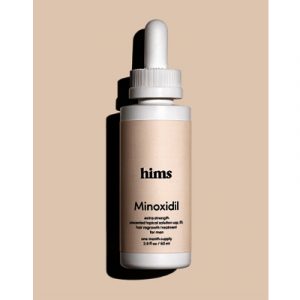 Minoxidil is an artificial drug that was initially developed to treat ulcers. While it failed as a cure for ulcers, it was found to be very effective against hypertension because it encouraged blood circulation. As a result, it received FDA approval as a hypertension treatment.
Minoxidil is an artificial drug that was initially developed to treat ulcers. While it failed as a cure for ulcers, it was found to be very effective against hypertension because it encouraged blood circulation. As a result, it received FDA approval as a hypertension treatment.
However, people using it for hypertension also started seeing improvement in hair growth. As a result, people started using it as a hair loss treatment on the sly. It took FDA about a decade to recognize minoxidil as an effective hair loss treatment.
Minoxidil is a topical drug that is available in the solution format and the foam format. The foam version is better since it doesn’t contain alcohol, which can dry hair and cause irritation in the scalp. Both, men and women can use it, but women are advised to use lower concentrations (2% as opposed to 5%).
Finasteride
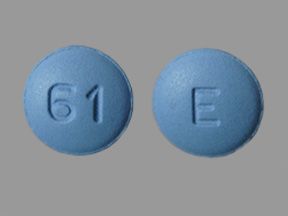 Finasteride is a prescription drug. This means that you can only get it if you have a prescription from a medical practitioner. It is an anti-DHT drug that inhibits an enzyme called 5-alpha reductase.
Finasteride is a prescription drug. This means that you can only get it if you have a prescription from a medical practitioner. It is an anti-DHT drug that inhibits an enzyme called 5-alpha reductase.
5-alpha reductase is responsible for converting excess testosterone in the body to dihydrotestosterone or DHT. Since DHT prevents hair follicles from growing hair, finasteride becomes an effective counter to hair loss.
The reason why finasteride is a prescription-only drug is that it can cause hormonal imbalance in the body. Even so, if the dosage is controlled, it can be used safely by men and women alike.
Contents
- What Is Non-Surgical Hair Replacement?
- What Are the Advantages of Non-Surgical Hair Replacement?
- What Are the Disadvantages of Non-Surgical Hair Replacement?
- How Is Non-Surgical Hair Replacement Different from Hair Transplant?
- How Much Does Non-Surgical Hair Replacement Cost?
- What Are the Characteristics of a Good Non-Surgical Hair Replacement System?
- What Is the Non-Surgical Hair Replacement Maintenance Like?
- Showering with The Non-Surgical Hair Replacement System
- Removing and Cleaning the Non-Surgical Hair Replacement System
- Cleaning the Scalp After Removing the Non-Surgical Hair Replacement System
- Conditioning the Non-Surgical Hair Replacement System
- Sleeping with The Non-Surgical Hair Replacement System
- Brushing the Non-Surgical Hair Replacement System
- Maintaining A Curly Non-Surgical Hair Replacement System
- Which Shampoos Are Good for Non-Surgical Hair Replacement System?
- Which Conditioners Are Good for Non-Surgical Hair Replacement System?
- Are There Other Non-Surgical Hair Replacement Options?
